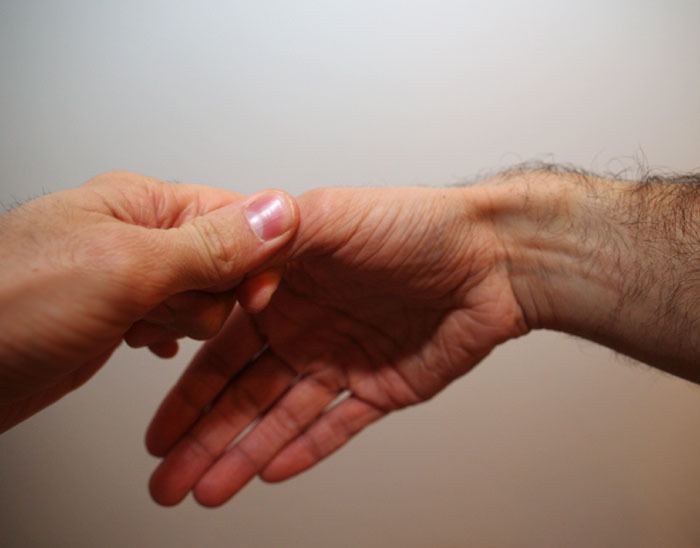 | ||
Finkelstein's test is used to diagnose De Quervain's tenosynovitis in people who have wrist pain. To perform the test, the examining physician or therapist grasps the thumb and ulnar deviates the hand sharply, as shown in the image. If sharp pain occurs along the distal radius (top of forearm, close to wrist; see image), de Quervain's tenosynovitis is likely.
Contents
Other practitioners use a modified Eichhoff's test, below, and ask their patients to flex their thumb and clench their fist over the thumb before ulnar deviation, but with ulnar deviation performed by the practitioner. Eichhoff's test is commonly confused with Finkelstein's test. However the Eichhoff's test may produce false positive results, while a Finkelstein's test performed by a skilled practitioner is unlikely to produce a false positive.
Purpose
Finkelstein's test is one way to determine if there is tenosynovitis in the abductor pollicis longus and extensor pollicis brevis tendons of the wrist. These two tendons belong to the first dorsal compartment.
Background
Finkelstein's test was described by Harry Finkelstein (1865–1939), an American surgeon, in 1930. A similar test was previously described by Eichhoff, in which the thumb is placed in the palm of the hand and held with the fingers, and the hand is then ulnar deviated (see second image), causing intense pain over the radial styloid which disappears if the thumb is released. This test produces more false positive results than the test described by Finkelstein.
Method
The examiner pulls the thumb of the patient in ulnar deviation and longitudinal traction. If there is an increased pain in the radial styloid process and along the length of the extensor pollicis brevis and abductor pollicis longus tendons, then the test is positive for De Quervain’s syndrome.
Special considerations/implications
Eichhoff's test is commonly mislabeled as being Finkelstein's test. This is significant because Eichhoff's test may create pain in other tissues to come back a false positive or may come back negative though de Quervain’s syndrome is still suspected, the patient can radially deviate against resistance to possibly reproduce pain. If performed correctly by the examiner, Finkelstein's test does not give false positives.
